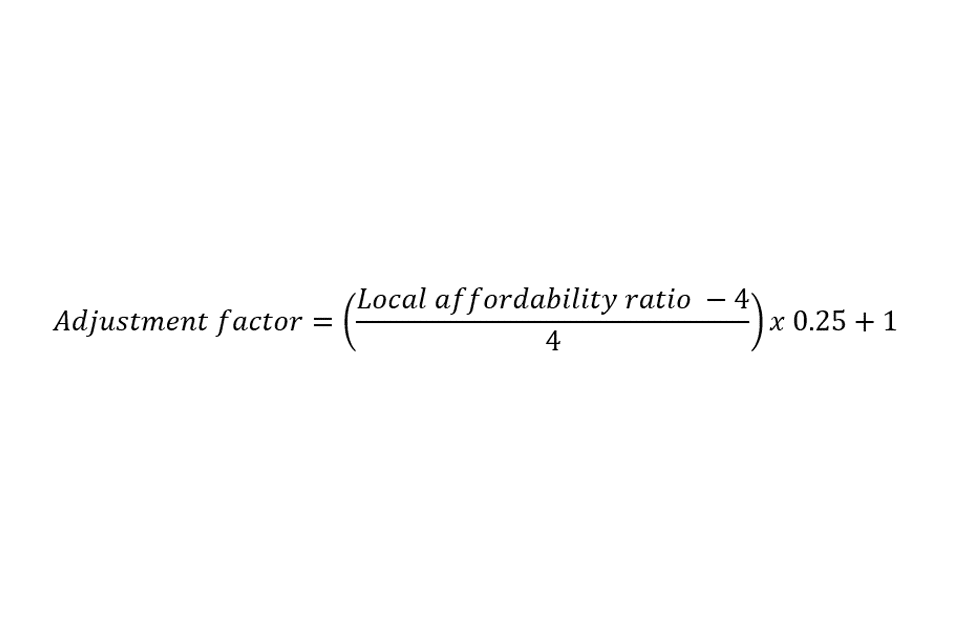Planning is arguably one of the most visible things that the District Council is responsible for and certainly ranks highly in terms of both public interest and also impact on voters and residents. It was also one of the things that caught my attention in terms of District Council responsibilities when I was thinking of standing as a Councillor last year. In this post I’m going to give you some of the opinions that I personally have as well as attempt to relay my perspective on some of the challenges facing Wealden in the time to come.
What’s it all about?
Rarely a week goes by when we don’t read something in the press (either local or national) about housing, housebuilding, mortgages etc. Talking about property seems, in some way, to be a bit of a national pastime. “There’s not enough homes” or “everything’s too expensive” are common complaints up and down the country. In Crowborough South East, the Ward that I represent in Wealden there are a number of large housing developments being built out right now, which is changing the character of the town hugely. These preceded my election as a Councillor but in my personal opinion, it’s overdevelopment in this part of the town.

Housebuilding is, at the Central Government level controlled by the Department of Levelling up, Housing and Communities. At the time of writing the Minister responsible is Michael Gove. Housing targets are mandated and set by Central Government and they make various arguments for the numbers. The current Conservative Government committed to building 300,000 new homes per year in their election manifesto in 2019 (read more about that here) .Wealden is currently required to deliver somewhere in the region of 1200 homes per year. This number comes from a formula called the “Standard Method” (for assessing housing need). It purports to take into account a number of factors (which I won’t go into here – if you’re keen to read more, you can find information at this location).
Where and what is Wealden’s Local Plan?
Paragraph 15 of the National Planning Policy Guidance (we’ll come back to this word salad later) requires that Succinct and up-to-date plans should provide a positive vision for the future of each area
The planning system should be genuinely plan-led. Succinct and up-to-date plans should provide a positive vision for the future of each area; a framework for addressing housing needs and other economic, social and environmental priorities; and a platform for local people to shape their surroundings.
NPPF, Paragraph 15
Wealden does not currently have a Local Plan in place. If you live in Wealden and have been even remotely interested in the planning process here then you’ll probably know the background but, in summary, the draft 2019 Local Plan was withdrawn leaving Wealden “plan-less”.
There is another element to this in something called the “5 year housing land supply” (5YHLS). It’s another obscure equation that related to the 1200 houses per year figure I mentioned earlier. In simple terms, it is a repository of “deliverable sites” which provide room for 5 years worth of housing growth (on a rolling basis). Wealden currently sits somewhere in the region of 3.92 years.
The effect or not having an up to date Local Plan (something which the recently elected Council on Wealden is working hard to address) along with the absence of a 5YHLS means that every time (for the most part) an application for planning is submitted and validated by Wealden another obscure paragraph of the NPPF is engaged. That paragraph is 11(d).
Paragraph 11(d) and the “Tilted Balance”
11(d) of the NPPF says that “Plans and decisions should apply a presumption in favour of sustainable development where:
d) where there are no relevant development plan policies, or the policies which are most important for determining the application are out-of-date 8 , granting permission unless:
(i) the application of policies in this Framework that protect areas or assets of particular importance provides a clear reason for refusing the development proposed 7 ; or
(ii) any adverse impacts of doing so would significantly and demonstrably outweigh the benefits, when assessed against the policies in this Framework taken as a whole.“
This means that Council Officers and Planning Committee members are starting from a position of “a presumption in favour (of building)” unless it can be demonstrated that granting permission would be more harmful than the benefit afforded by a new house(s).
It is then up to Council Officers (in the case of delegated decisions) or Planning Committee Members to make a judgement call and argue their case if they think the harm outweighs the benefit.
Most of us would probably agree that indiscriminate, unplanned applications to build hundreds of houses is not going to produce the best outcome. It is, however, a situation that we have to deal with (at least for the time being until the 5YHLS or Local Plan is resolved).
What has not helped is the number of planning approvals that are not currently being built out. Developer land banking is a problem up and down the country and enables unscrupulous applicants to apply for permission arguing that there is no 5YHLS, not build or delay the construction, and do it over again. Rinse and repeat.

Material considerations
Making the case that the harm outweighs the benefit (or vice versa) requires you to take an objective and considered view of “material considerations”. In planning terms, these can be things such as (bear in mind this is a non exhaustive list):
- Overlooking/loss of privacy
- Loss of daylight/sunlight or overshadowing
- Scale and dominance
- Layout and density of buildings
- Appearance and design of development and materials proposed
- Disabled persons’ access
- Highway safety
- Traffic and parking issues
- Drainage and flood risk
- Noise, dust, fumes etc
- Impact on character or appearance of area
- Effect on listed buildings and conservation areas
- Effect on trees and wildlife/nature conservation
- Impact on the community and other services
- Economic impact and sustainability
- Government policy
- Proposals in the Local Development Plan
- Previous planning decisions (including appeal decisions)
Lots of help on what is material and what is not material can be found in the NPPF. Additionally (and specific to Wealden) there are a number of “Saved Policies” from the 1998 Local Plan that can be referred to. Planning appeal decisions and the planning practice guidance are all sources of inspiration when making an argument (whatever side you’re on).
Interested in seeing more of what goes on with Wealden’s planning Committees?
I’m not going to pretend that they’re any contender for whatever plans you might have already in the diary but Wealden’s Planning Committees are live streamed on the website, and there is a repository of past meetings which can also be viewed by those who are interested. These can all be found on the Wealden District Council website here. They are also meetings held in public and anyone with an interest may come and observe on the day.
More Information and Resources.
I’ve tried to provide a summary of the various things that planning committees consider when looking at an application before them. It’s not an exhaustive list and I am certainly not holding myself out as a leading expert (I’m just a man with an opinion and 1/12 of the Committee). Hopefully it’s helpful. If you’re looking to read up on any of the above, then the below links provide a good place to start:
National Planning Policy Framework: https://www.gov.uk/guidance/national-planning-policy-framework
Planning Practice Guidance: https://www.gov.uk/government/collections/planning-practice-guidance
Index of Wealden Saved Policies (1998 Local Plan): https://www.wealden.gov.uk/UploadedFiles/Index_of_Saved_Policies.pdf
Wealden Core Strategy 2013: https://www.wealden.gov.uk/UploadedFiles/Adopted_Core_Strategy_2013_for_web.pdf
Wealden Design Guide: https://www.wealden.gov.uk/planning-and-building-control/planning-policy/planning-policy-documents/wealden-design-guide/
Andrew Wilson is a District Councillor for Crowborough South East Ward in Wealden. He sits on Wealden District Council’s Planning Committee North as Vice Chair.
